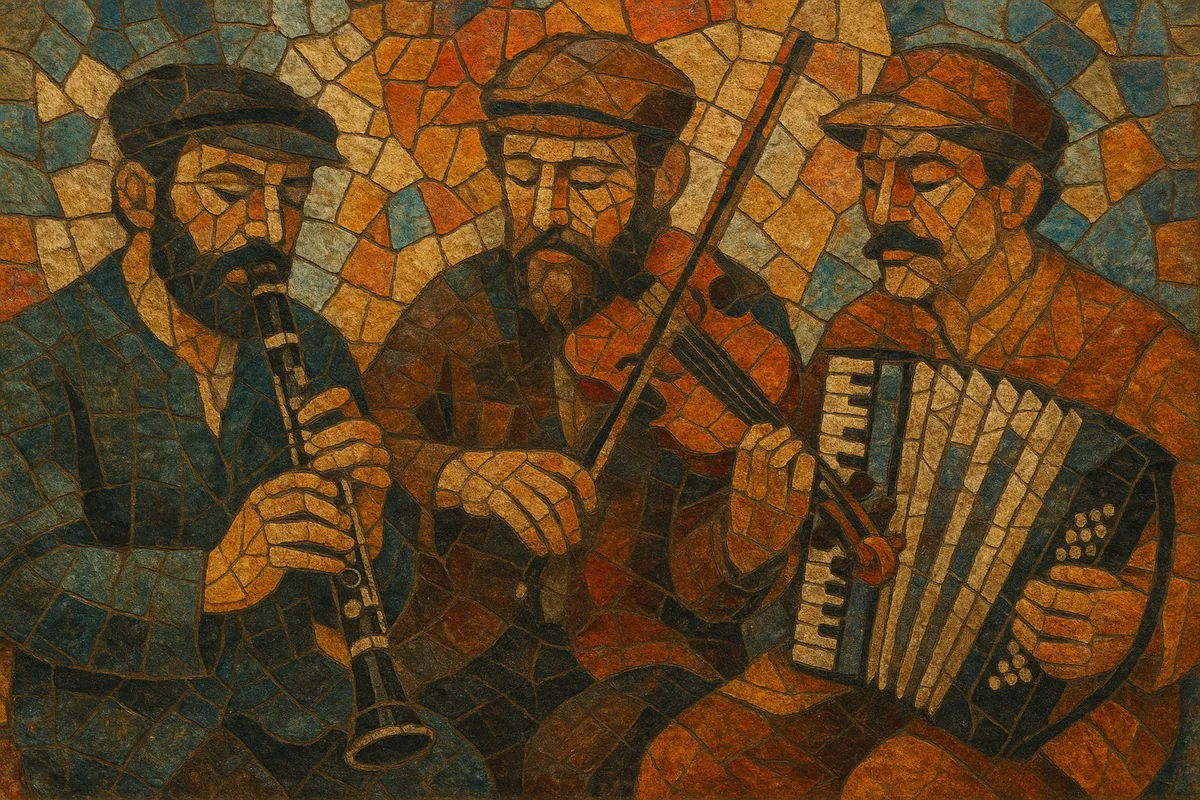Klezmer is the traditional instrumental music of Ashkenazi Jews from Eastern Europe, originally performed by itinerant bands for weddings and communal celebrations. It is characterized by expressive, voice-like ornamentation (krekhts, slides, trills), flexible phrasing, and a repertoire of dance forms such as freylekhs, bulgar, sher, khosidl, and horas.
Modal color is central: the freygish (Ahava Rabbah/Phrygian dominant) and Mi Sheberakh (Ukrainian Dorian) modes are common, lending the music its plaintive, celebratory, and at times bittersweet sound. Typical ensembles feature clarinet or violin as lead, with tsimbl (hammered dulcimer), accordion, trumpet/trombone, bass, and later American additions like piano and drum set.
While rooted in Jewish liturgical and Hasidic song, klezmer absorbed 19th‑century European social dances (polka, waltz, mazurka) and Balkan/Romanian influences (notably the free-rhythm doina), producing a flexible style that moves from rhapsodic improvisation to propulsive dance tunes.
Klezmer coalesced in the Ashkenazi Jewish communities of Eastern Europe, where professional musicians (klezmorim) provided music for weddings and communal events. Drawing on synagogue chant and Hasidic nigunim, these bands incorporated local dance repertories—polkas, waltzes, mazurkas—and Romanian/Balkan idioms such as the improvisatory doina. By the 1800s, a distinct instrumental style with characteristic ornaments, modes, and dance forms had emerged.
Mass Jewish migration to the United States (c. 1880–1924) transplanted klezmer to New York and other urban centers. There, star clarinetists such as Naftule Brandwein and Dave Tarras recorded prolifically, blending Old World repertoire with American influences. Brass, saxophone, piano, and drum set entered the ensembles, and the style intersected with theater music and popular dance bands.
The Holocaust and wartime upheavals devastated Jewish communities in Europe, interrupting local klezmer lineages. In the U.S., second-generation assimilation and the rise of swing, jazz, and later rock marginalized traditional klezmer, though some musicians continued in wedding bands and Yiddish theater.
From the late 1970s, musicians and scholars in the U.S. and Europe sparked a klezmer revival, reviving archival tunes, modes, and performance practice. Ensembles like The Klezmorim, Kapelye, and The Klezmatics catalyzed renewed interest, while virtuosos such as Giora Feidman and Andy Statman brought klezmer to concert stages. The 1990s–2000s saw global expansion, fusions with jazz, rock, and world music, and new compositions that honor traditional forms while extending the idiom.


